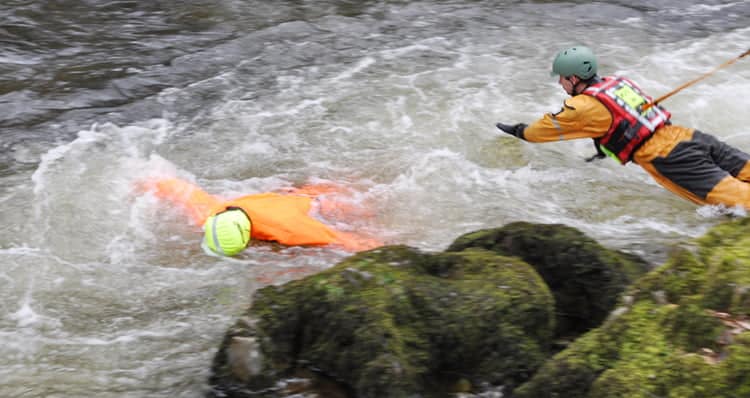It’s a hot day and a group of young people are walking along a river, having fun and enjoying the sunshine. A mix of bravado and heat encourages one of the group to jump into the river….
It is precisely this moment that can lead to disaster.
Even on a hot summer’s day, open water in the UK is cold – usually between 10 – 15° and when exposed to this temperature quickly (such as when jumping into a cold river, lake or the sea) our bodies react quickly, experiencing ‘Cold Water Shock’.
In the middle of winter, the danger of entering the water is more obvious, but this does not mean it is less of a problem.
What is Cold Water Shock?
Cold water shock is an instinctive set of responses caused by the rapid cooling of the skin.
Blood vessels in our skin close, which increases the resistance of blood flow. Our heart rate also quickens meaning that our heart must work even harder, causing blood pressure to rise. Cold water shock can cause a heart attack – even if you are relatively young and healthy.
Another effect of cold water shock is a ‘gasp’ reaction, where the cold water on our skin causes us to involuntarily gasp for breath…. if you’re underwater when this happens, the consequences can be disastrous. Even if your head is above water, breathing rate changes uncontrollably and these symptoms can cause a panic attack, further increasing the likelihood of taking water into the lungs.
If the victim survives these initial problems, within a couple of minutes, hands, feet, legs and arms rapidly cool, further restricting blood flow. This leads to decreasing muscle strength and a reduced control of our body movements. In this situation, even strong swimmers can drown.
New initiative teaching Welsh young people the dangers
It’s important that young people are taught about the dangers of cold water.
We were pleased to see a BBC Wales report recently speaking of a new feature of the Welsh Baccalaureate. Watch video here.
From September 2017, ‘Water Challenge’ is part of the Welsh Baccalaureate and aims to teach young people about the dangers of open water. Pupils must carry out 10 hours where they plan and carry out activities to educate their friends, community and visitors on the dangers of water and how to stay safe.
Training in cold water
Likewise, it is essential that rescuers (whether professional or volunteer) are taught effective techniques for rescuing someone in cold water.
There are many fantastic rescue training facilities across the UK where teams can learn water rescue techniques, including in cold water.
Water rescue is an issue close to our hearts at Ruth Lee Ltd, so much so that we have a range of water rescue manikins, and we are proud to supply these to rescue training centres and teams across the UK.
The use of manikins in cold water rescue scenarios is particularly important to minimise the risk to the volunteer victims. We know cold water is dangerous – why risk a living person in a rescue scenario?
For further advice about our range of Water Rescue dummies, please call 01490 413 282 or click here for further information
